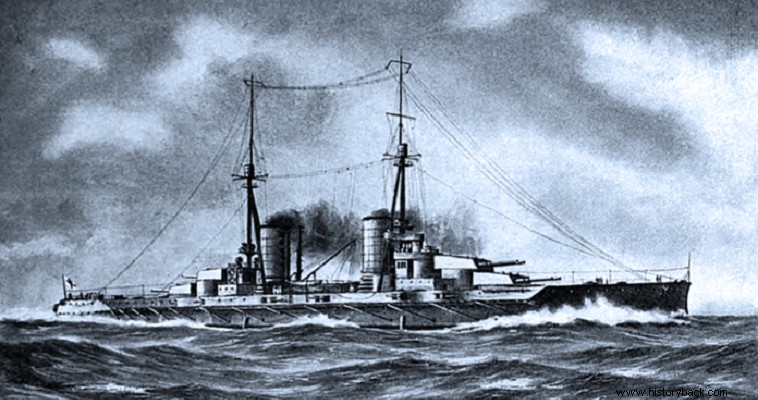
After the happy end of the Balkan Wars, the Navy was the ruler of our Aegean. However, the Turks had no intention of accepting their defeat and decided to buy a powerful battleship, which was being built in Britain, on behalf of Brazil, with whom the Turks had agreed to buy it.
In view of this eventuality, it was obvious that the Greek Navy had to be strengthened accordingly. This is how the order was decided, in Germany, at the Vulcan shipyards in Hamburg. However, the Greek government had not decided exactly what it wanted. The first specifications were set in July 1912.
Initially the Greek specifications were for a small coastal defense battleship, 139.6m long and 13,500t displacement. armed with 6 14in (356mm), 8 6in (152mm), 8 76mm, 4 anti-aircraft 37mm and 4 torpedo tubes and a maximum speed of 21 knots. However, the Greek side changed the specifications and finally it was decided that the vessel, which would be called "Salamis", would be a normal and powerful battleship, 173.3m long. and displacement of 19,500t.
The ship would carry, as primary armament, 8 heavy 14in guns. distributed in four twin turrets and as secondary, 12 6in guns, mounted along the superstructure, 12 75mm fast guns. and 5 torpedo tubes of 500 mm. The vessel would be powered by AEG steam turbines, with a total horsepower of 40,000 HP, which would give the vessel a maximum speed of 23 knots.
Its armor would also be strong, able to withstand hits from the 12in guns. with which the new Turkish battleship would be equipped. It reached a maximum thickness of 250mm in the battleship belt, their turrets and mounts, and in the ammunition compartments.
The ship was due to be delivered in March 1915. However, work was halted on 31 December 1914, as World War I had broken out and, due to the British naval blockade of Germany, the American guns that would have armed the vessel could not be delivered. The Greek government refused to take delivery of the unfinished ship, as the Germans wanted.
The issue was not resolved until 1932, with Greece eventually paying £480,000 – around 37% of the ship's total purchase cost – to the German shipyards, without of course ever taking delivery of the ship, which was taken to the scrap yards in Bremen, where sold for scrap.
